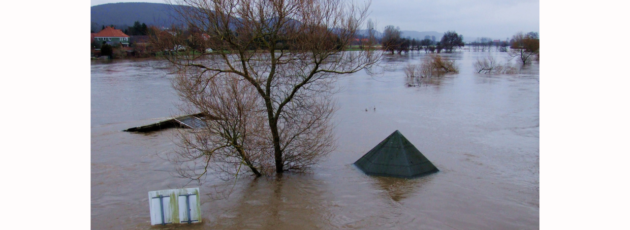By Sue Quimby
According to the National Flood Insurance Program (NFIP), floods are the #1 natural disaster in the United States, causing over $2.7 billion per year from 2000-2010. Since flood damage is excluded in most standard insurance policies, it is important that every insured consider adding flood coverage to their insurance portfolio. Understanding the exposure and offering the proper coverage to your clients is an essential value-added service of the professional insurance agent.
Everyone’s property is exposed to flood in some degree, even if there has never been a flood there before. Flood is usually defined a temporary partial or complete inundation of two or more acres of normally dry land (floodsmart.gov). FEMA (Federal Emergency Management Agency) publishes Flood Insurance Rate Maps (FIRM) showing locations of high, moderate to low and undetermined flood risks. Special Flood Hazard Area (SFLHA) or high-risk zones are those that have a one in four risk of flooding in a 30 year period. Moderate to low risk zones have a reduced flood risk. Undetermined zones have a flood risk, but a survey has not been done.
It is a common misconception that flood insurance is only available in high risk zones. Flood insurance is required by FEMA for federally-backed mortgages in high risk zones, in an attempt to ensure that there is enough coverage to rebuild after a loss. Coverage is actually available in any town that participates in the NFIP, but not all towns participate.
NFIP records show that 20% of flood claims come from people in moderate to low risk zones. 30% of disaster assistance goes to people in these areas as well. Unlike flood insurance proceeds, disaster relief (when and if it is available), is often a loan that has to be repaid, with interest.
Flood hazards change due to such factors as changes in weather patterns, land development, erosion and changing government regulations. For example, many levees no longer meet the federal standards. FEMA (Federal Emergency Management Association) is currently updating their flood maps. An insurance agent is the best source of information to clients who want to know about their flood exposure.
Coverage is available for buildings and contents but limited to a maximum of $250,000 on buildings and $100,000 on contents. Coverage is also limited in areas below ground level such as basements and crawl spaces. Not everything that can be covered under a Homeowners or Commercial policy is covered under a flood policy. Examples include outdoor structures. There is a 30 day waiting period before flood insurance goes into effect. So, it is prudent to purchase coverage before you need it.
NFIP data show that the average personal flood claim is $48,000, and the average commercial flood claim is over $85,000. Just a few inches of water can cause tens of thousands of dollars in damage. Two feet of water is enough to carry a car away. For more information about flood risk and coverage, go to www.floodsmart.gov.
Damage caused by floods can be devastating. Having insurance can help. Providing the proper coverage and information to your insureds is the sign of the true insurance professional.
Sue Quimby is a vice president, media editor, client services & training and a senior product development analyst at MSO, Inc (The Mutual Service Office, Inc). You can reach Sue at 201.857.9128 or squimby@msonet.com.
MSO® provides advisory services for all property and casualty lines except workers compensation. This includes customized forms and manuals for insurers, MGA’s, and agents/brokers. Additional information is available at www.msonet.com. This article was previously published in Insurance Advocate® magazine ads is provided courtesy of MSO®, Inc. (The Mutual Service Office, Inc.) for non-commercial use only. For any other licensing requests or permissions, please contact squimby@msonet.com. © MSO®, Inc. 2022.
